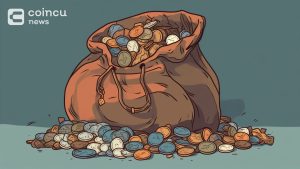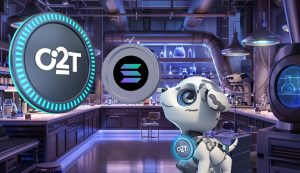Rollups Technology: Scaling Solution, Reducing Transaction Fees On Ethereum
Rollups technology helps to increase scalability as well as reduce transaction fees for transactions taking place on the Ethereum network. So how do they work? Let’s learn about this solution with CoinCu.
What are rollups technology?
Simply put, rollups are one of many solutions to help with scaling for Ethereum (ETH). They do this by externally pooling thousands of transactions together, rolling them up into a block before sending it to the mainnet for writing to the Ethereum blockchain.
Thanks to this technology, the Ethereum network instead of having to process each of those thousands of transactions, now only has to process a single transaction.

Ethereum is in the process of updating to Ethereum 2.0. In theory, if this update is successful, the Ethereum network itself should solve its current scalability problems and high gas fees. At that point, other scaling technologies similar to rollups will no longer be useful.
However, Vitalik Buterin thinks that scaling solutions like rollups technology will still play an important role on the blockchain even after Ethereum 2.0 is implemented.
How do rollups technology work?
The essence of rollups technology are to aggregate small transactions and transfer them to the Ethereum mainnet in a single transaction.
However, based on technical characteristics, they are also divided into two different types: optimistic rollups and zero-knowledge rollups. Still based on the method of scrolling data as above, but corresponding to each of these types, there are also some basic differences. Specifically:
- Optimistic rollups: This form will ensure these rolled data are valid, and there is no fraud in the blockchain by hiding transactions. To be able to hide these transactions, optimistic rollups create a dispute-resolution mechanism. This mechanism allows anyone to contest the legitimacy of the transaction. If suspicious transactions appear, they will be sent separately directly to the Ethereum network for inspection and verification, thereby resolving disputes. Some solutions are built based on this mechanism such as Optimism (OP), Arbitrum, or Boba network…
- Zero-knowledge rollups (also known as zk-rollups): This form has a completely different operating structure than optimistic. It relies on a piece of code called a zero-knowledge proof, which allows information to be proven without disclosing it. In crypto, these are called zk-SNARKs, referring to an additional piece of cipher called “succinct non-interactive argument of knowledge”. This method bypasses the contention system inherent to optimistic rollups because the “SNARK” bit only allows valid transactions to be uploaded to the rollup. Some solutions follow this mechanism such as Loopring, Immutable X, or ZKSync…
Who’s building rollups technology?
Optimistic rollups:
- Optimism: a cheap layer-2 system for Ethereum
- Arbitrum: an L2 protocol for Ethereum
- Boba Network: the next generation of OMG Network
Zero-knowledge rollups:
- Loopring: a protocol that also provides a gas-free decentralized exchange
- Immutable X: an L2 protocol for NFTs
- ZKSync: a zero-knowledge L2 for Ethereum
How can you buy rollups technology?
You can’t “buy” a scaling solution, but you can invest in tokens that rely on the technology. Loopring and Boba are popular examples of rollup technologies. You can buy their tokens on Ethereum-based decentralized exchanges or on centralized exchanges. Check sites like CoinMarketCap or CoinGecko to find the largest markets.
You can also use the DeFi services and exchanges created by these layer-2 networks to cut transaction costs. Loopring, for instance, operates its own layer-2 exchange, also called Loopring. There, you can take advantage of all of the delights of rollup technologies: gas-free, instantaneous trades for ERC-20 coins.
The future of rollups technology
In the short term, the battle will continue to rage between the two competing forms of rollups: optimistic and zero-knowledge. Some claim that zero-knowledge proofs are superior because they do not require a dispute-resolution mechanism.
The long-term future of rollups depends on how upgrades to Ethereum’s mainnet pan out. Ethereum could one day become so fast that rollups would look like an unnecessary speed boost to a lightning-fast blockchain.
Conversely, rival L1 blockchains, like Solana and Avalanche, could become so popular that they usurp Ethereum entirely. Should the majority of DeFi’s traffic take place on blockchains other than Ethereum, rollups would become redundant.
Alternatively, rollups technology could continue to rise should Ethereum become more powerful. They could integrate with the upcoming upgrades to make Ethereum easier and cheaper to use for the masses.
DISCLAIMER: The Information on this website is provided as general market commentary and does not constitute investment advice. We encourage you to do your own research before investing.
Join CoinCu Telegram to keep track of news: https://t.me/coincunews
Follow CoinCu Youtube Channel | Follow CoinCu Facebook page
Harold
CoinCu News























